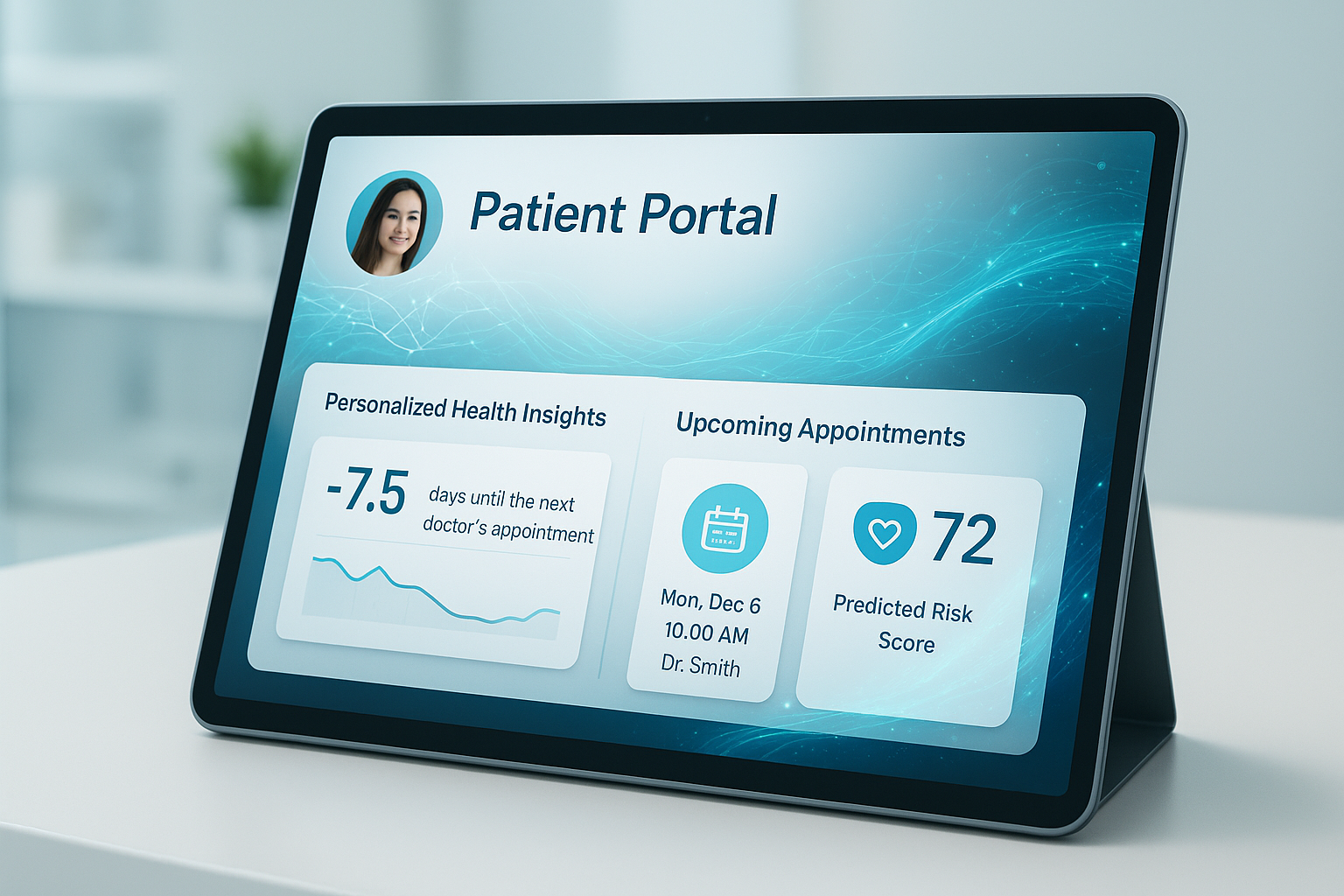AI-Powered Web Apps: Transforming Healthcare with Intelligent Patient Portals
Explore how healthcare organizations are leveraging AI-powered web applications to create intelligent patient portals that improve care coordination and patient engagement.

The healthcare industry is undergoing a digital transformation that's fundamentally changing how patients interact with their care providers. At the heart of this revolution are AI-powered web applications that create intelligent, personalized patient portals. These aren't just digital versions of paper forms—they're intelligent systems that adapt to patient needs, predict health outcomes, and streamline the entire care journey.
Modern patient portals powered by AI are transforming the healthcare experience from reactive to proactive, from generic to personalized, and from fragmented to integrated. They're not just improving patient satisfaction—they're improving health outcomes and reducing healthcare costs.
The Evolution of Patient Portals: From Static to Intelligent
Traditional patient portals were essentially digital filing cabinets—places where patients could view their medical records, schedule appointments, and send messages to their providers. While useful, they lacked the intelligence to truly enhance the patient experience or improve health outcomes.
AI-Powered Portal Capabilities
- ✓ Intelligent appointment scheduling - AI suggests optimal appointment times based on patient history and provider availability
- ✓ Personalized health insights - AI analyzes patient data to provide relevant health recommendations and education
- ✓ Predictive health alerts - AI identifies potential health risks and proactively notifies patients and providers
- ✓ Smart medication management - AI tracks medication adherence and provides personalized reminders
Real-World Impact: Healthcare Organizations Leading the Way
Several healthcare organizations have already implemented AI-powered patient portals with remarkable results. These case studies demonstrate the transformative potential of intelligent healthcare applications.
Case Study: Mayo Clinic's AI-Enhanced Patient Portal
Mayo Clinic implemented an AI-powered patient portal that uses machine learning to personalize the patient experience. The system analyzes patient behavior, health history, and preferences to provide tailored content and recommendations. The results were impressive: 40% increase in patient engagement, 30% reduction in missed appointments, and 25% improvement in patient satisfaction scores.
Case Study: Kaiser Permanente's Predictive Health Platform
Kaiser Permanente developed an AI-enhanced patient portal that predicts health risks and provides proactive interventions. The system analyzes patient data to identify individuals at risk for chronic conditions and automatically provides personalized health recommendations. This proactive approach has led to a 35% reduction in emergency room visits and a 20% improvement in chronic disease management.
Key Features of AI-Powered Healthcare Portals
The most successful AI-powered healthcare portals share several key features that set them apart from traditional systems. These features aren't just nice-to-haves—they're essential for delivering the personalized, intelligent healthcare experience that modern patients expect.
Essential AI Features
- ✓ Natural language processing - AI understands patient queries in plain English and provides relevant responses
- ✓ Predictive analytics - AI analyzes patient data to predict health trends and identify potential issues
- ✓ Intelligent automation - AI automates routine tasks like appointment scheduling and medication reminders
- ✓ Personalized content - AI delivers health education and recommendations tailored to individual patient needs
Implementation Challenges and Solutions
While the benefits of AI-powered patient portals are clear, implementing these systems isn't without challenges. Healthcare organizations face unique obstacles related to data privacy, regulatory compliance, and user adoption.
Data Privacy and Security
Healthcare data is among the most sensitive information organizations handle. AI-powered portals must implement robust security measures while maintaining the functionality that makes them valuable. Solutions include end-to-end encryption, secure API integrations, and compliance with HIPAA and other healthcare regulations.
User Adoption and Training
Both patients and healthcare providers need to understand how to use AI-powered portals effectively. Successful implementations include comprehensive training programs, intuitive user interfaces, and ongoing support to ensure maximum adoption and utilization.
The Future of AI-Powered Healthcare Portals
As AI technology continues to advance, the capabilities of healthcare patient portals will expand dramatically. The future promises even more intelligent, personalized, and proactive healthcare experiences.
Future Capabilities
- • AI-powered virtual health assistants for 24/7 patient support
- • Predictive health modeling for early disease detection
- • Integration with wearable devices for real-time health monitoring
- • Personalized treatment recommendations based on genetic and lifestyle data
- • Automated care coordination between multiple healthcare providers
Getting Started: Implementation Roadmap
Healthcare organizations looking to implement AI-powered patient portals should follow a structured approach that ensures success while managing risks and costs.
Phase 1: Assessment and Planning
Begin by assessing current patient portal capabilities and identifying specific areas where AI can add value. Focus on high-impact, low-complexity use cases that can demonstrate quick wins and build momentum for broader implementation.
Phase 2: Pilot Implementation
Start with a pilot program targeting a specific patient population or use case. This allows organizations to test AI capabilities, gather feedback, and refine the system before full deployment.
Phase 3: Full Deployment and Optimization
Once the pilot is successful, expand the AI capabilities to the full patient population. Continue to monitor performance, gather feedback, and optimize the system based on real-world usage patterns.
Conclusion: The Path Forward
AI-powered patient portals represent the future of healthcare delivery. They're not just improving the patient experience—they're transforming how healthcare organizations operate and deliver care.
The organizations that embrace this technology now will be the leaders of tomorrow's healthcare landscape. The question isn't whether to implement AI-powered patient portals—it's how quickly you can get started and how effectively you can leverage these capabilities to improve patient outcomes and organizational efficiency.
The future of healthcare is intelligent, personalized, and proactive. AI-powered patient portals are the gateway to that future, and the time to begin the journey is now.